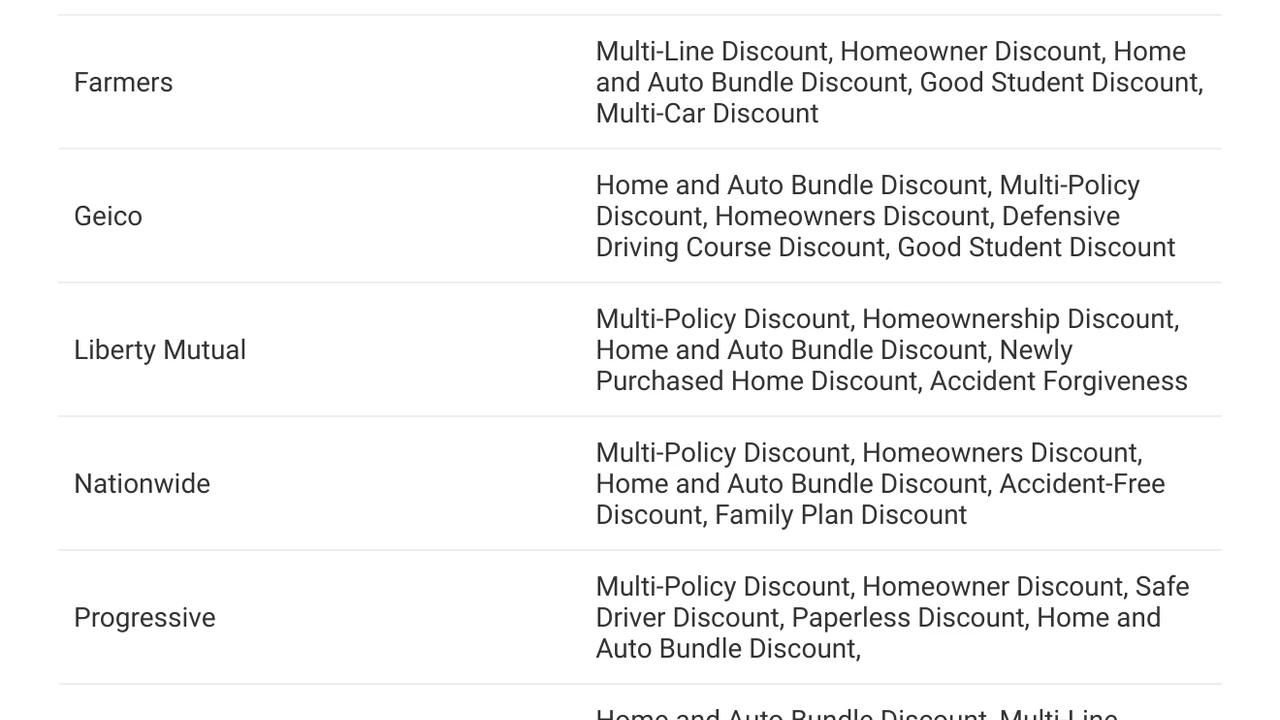3 Essential Tips for Auto Insurance in Cambodia
Get 3 essential tips for auto insurance in Cambodia. Understand local regulations and find reliable coverage for your vehicle.

3 Essential Tips for Auto Insurance in Cambodia
Hey there, fellow drivers! Navigating the roads of Cambodia can be an adventure, to say the least. From the bustling streets of Phnom Penh to the scenic routes of Siem Reap, having your own set of wheels offers incredible freedom. But with that freedom comes responsibility, and a big part of that is making sure you're properly insured. Auto insurance in Cambodia might seem a bit different from what you're used to, especially if you're coming from a Western country or even other parts of Southeast Asia. Don't sweat it, though! I'm here to break down three essential tips to help you understand local regulations and find reliable coverage for your vehicle. We'll dive deep into what you need to know, what to look out for, and even some specific product recommendations to get you started. Let's hit the road!
Understanding Cambodia's Auto Insurance Landscape Key Regulations and Requirements
First things first, let's talk about the lay of the land. Unlike some countries where third-party liability insurance is mandatory for all vehicles, Cambodia's auto insurance scene has been evolving. Historically, it wasn't strictly enforced for all private vehicles, but things are changing, and it's always wise to be prepared and protected. The Ministry of Economy and Finance (MEF) and the Insurance Regulator of Cambodia (IRC) are the main bodies overseeing the insurance sector. While comprehensive insurance might not be a legal requirement for every single vehicle on the road, having at least third-party liability is highly, highly recommended, and in many cases, becoming a de facto standard, especially if you're financing a vehicle or want peace of mind.
The primary types of auto insurance you'll encounter are:
- Third-Party Liability (TPL): This is the most basic form. It covers damages and injuries you might cause to other people or their property in an accident. It doesn't cover damages to your own vehicle or your own injuries. Think of it as protecting you from financial ruin if you're at fault in an accident involving another party.
- Comprehensive Insurance: This is the big kahuna. It includes TPL but also covers damages to your own vehicle from accidents (even if you're at fault), theft, fire, natural disasters, and sometimes even vandalism. It's the most expensive but offers the broadest protection.
- Personal Accident (PA) Coverage: Often an add-on, this covers medical expenses or compensation for injury or death for you and your passengers in an accident.
It's crucial to understand that while the legal framework might seem less stringent than in some other nations, the financial consequences of an accident without proper insurance can be devastating. Medical costs can be high, and vehicle repairs are not cheap. So, even if it's not 'mandatory' in the strictest sense for your specific vehicle type, consider it a non-negotiable investment.
Choosing the Right Coverage for Your Vehicle and Driving Habits in Cambodia
Now that you know the types, how do you pick the right one? This is where your personal situation comes into play. Consider these factors:
Vehicle Value and Age Considerations for Cambodian Auto Insurance
If you're driving a brand-new, expensive SUV, comprehensive insurance is almost certainly the way to go. The cost of repairing or replacing it would be substantial. For an older, less valuable vehicle, you might consider if the premium for comprehensive insurance is worth it compared to the vehicle's market value. Sometimes, for very old cars, TPL might be sufficient, as the cost of comprehensive might exceed the car's worth over a few years. However, remember that TPL still leaves you on the hook for your own vehicle's damage.
Driving Frequency and Risk Assessment for Cambodian Roads
How often do you drive? Do you commute daily in heavy traffic, or is your car mostly for weekend trips? More driving generally means higher risk. Also, consider where you drive. Are you mostly on well-maintained city roads, or do you venture onto more challenging rural paths? If you're a frequent driver, especially in urban areas with higher accident rates, comprehensive coverage offers invaluable peace of mind.
Financial Capacity and Risk Tolerance for Cambodian Drivers
What's your budget for insurance premiums? And how much financial risk are you comfortable taking on? If an unexpected repair bill of a few thousand dollars would be a major setback, then comprehensive insurance is a smart move. If you have ample savings and can comfortably cover such costs out-of-pocket, you might opt for a higher deductible to lower your premiums, or even stick with TPL if your vehicle's value is low.
Specific Product Recommendations and Comparison for Cambodian Auto Insurance
Let's get down to some specifics. While I can't give financial advice, I can point you towards some reputable insurers in Cambodia and highlight what they generally offer. Prices will vary wildly based on your vehicle, age, driving history, and chosen coverage, so always get multiple quotes!
Forte Insurance Cambodia Comprehensive Coverage Options
Forte Insurance is one of the largest and most established insurers in Cambodia. They offer a range of auto insurance products, including robust comprehensive plans. Their 'Motor Comprehensive' policy is popular and typically covers:
- Loss or damage to your vehicle due to accident, fire, theft, and natural perils.
- Third-party bodily injury and property damage.
- Personal accident coverage for the driver and passengers (often with various limits).
- Emergency roadside assistance (sometimes as an add-on or included in premium packages).
Typical Usage Scenario: Ideal for new or high-value vehicles, expats, or anyone who wants maximum protection and peace of mind. If you're financing a car, your lender will almost certainly require comprehensive coverage from a reputable insurer like Forte.
Comparison Point: Forte is known for its strong financial backing and relatively smooth claims process, which is a huge plus in any country. Their premiums might be slightly higher than some smaller players, but you're paying for reliability and a wider network.
Estimated Price Range: For a mid-range sedan (e.g., a Toyota Camry from 2018-2020), comprehensive coverage could range from $400 - $800 USD per year, depending on the sum insured, deductible, and specific add-ons. For a new SUV, it could easily go over $1000 USD.
GGI Insurance Cambodia Third-Party and Enhanced Plans
GGI (General Global Insurance) is another significant player. They offer competitive rates and a good range of products. Their 'Motor Insurance' typically includes:
- Third-Party Liability: Covering damage to other vehicles and injuries to third parties.
- Optional Own Damage (Comprehensive): You can add coverage for your own vehicle against collision, fire, and theft.
- Personal Accident: Available as an add-on for driver and passengers.
Typical Usage Scenario: Good for those looking for a balance between cost and coverage. If you have a slightly older vehicle but still want some protection for your own car, GGI's customizable options can be appealing. Also a solid choice for basic TPL.
Comparison Point: GGI often competes well on price, especially for TPL and basic comprehensive packages. They have a growing presence and are known for being responsive. Their online quoting system might be a bit more streamlined than some others.
Estimated Price Range: A basic TPL policy might be as low as $50 - $150 USD per year. If you add own damage for a mid-range car, it could be in the $350 - $700 USD per year range, depending on the level of coverage.
Cambodia Post Insurance (CPI) Accessible Options
Cambodia Post Insurance, often referred to as CPI, is a state-owned enterprise that has expanded into general insurance. They aim to provide accessible insurance products to a wider Cambodian population. Their motor insurance typically includes:
- Third-Party Liability: Standard coverage for third-party damage and injury.
- Own Damage: Coverage for your vehicle against accidents, fire, and theft.
- Personal Accident: For driver and passengers.
Typical Usage Scenario: Often a good choice for those seeking more budget-friendly options, or for local Cambodian citizens who prefer a state-backed insurer. They might have a wider reach in rural areas through post office networks.
Comparison Point: CPI might offer more competitive rates for basic coverage, making it attractive for those on a tighter budget. Their claims process might be more traditional, but they are a reliable entity.
Estimated Price Range: TPL could be similar to GGI, around $50 - $150 USD per year. Comprehensive for a mid-range vehicle might be in the $300 - $650 USD per year range.
Other Notable Insurers in Cambodia
Don't forget to check out others like CampuSafe Insurance, Prevoir Cambodia Life Insurance (which also offers general insurance), and Infinity General Insurance. Each has its own strengths, and getting quotes from at least three different providers is always a smart move.
Navigating the Claims Process and What to Do After an Accident in Cambodia
Okay, you've got your insurance, which is fantastic! But what happens if the unthinkable occurs? Knowing what to do after an accident and how to navigate the claims process is just as important as having the policy itself. This is where your insurance truly earns its keep.
Immediate Steps After a Road Accident in Cambodia
- Safety First: Ensure everyone's safety. Move your vehicle to a safe location if possible and turn on your hazard lights. Check for injuries. If there are serious injuries, call for medical help immediately (e.g., 119 for ambulance).
- Contact the Police: Even for minor accidents, it's highly advisable to call the local police (e.g., 117 or local police station number). A police report is often crucial for insurance claims, especially if there's significant damage or injury, or if liability is disputed. They will assess the scene and create an official record.
- Exchange Information: Get the other driver's name, contact number, vehicle registration number, and insurance details (if they have any). Provide your own information.
- Document the Scene: Take photos and videos of everything! This includes damage to all vehicles involved, the position of the vehicles, road conditions, traffic signs, and any visible injuries. Get multiple angles. This evidence is invaluable for your claim.
- Do Not Admit Fault: Even if you think you might be at fault, do not admit it at the scene. Let the police and insurance companies determine liability. Any admission could negatively impact your claim.
- Contact Your Insurer: As soon as it's safe, contact your insurance company. Most insurers have a 24/7 hotline for accident reporting. They will guide you through the next steps.
Understanding the Auto Insurance Claims Process in Cambodia
Once you've reported the accident to the police and your insurer, the claims process typically follows these steps:
- Claim Notification: You'll formally notify your insurer, providing all the details and documentation you collected at the scene (police report, photos, other party's info).
- Assessment and Survey: Your insurance company will send a surveyor or assessor to inspect the damage to your vehicle (and potentially the third-party vehicle if you have TPL). They will determine the extent of the damage and the cost of repairs.
- Repair or Settlement: Based on the assessment, your insurer will either authorize repairs at an approved garage or offer a cash settlement for the damages. If your vehicle is deemed a total loss, they will pay out its market value (minus your deductible).
- Third-Party Claims: If you were at fault and have TPL, your insurer will handle the claims from the third party for their vehicle damage and medical expenses. If the other party was at fault, their insurer would handle your claim.
- Deductible Application: Remember your deductible! This is the amount you agree to pay out-of-pocket before your insurance coverage kicks in. For example, if your repair bill is $1,000 and your deductible is $200, you pay $200, and your insurer pays $800.
Tips for a Smooth Auto Insurance Claim Experience in Cambodia
- Read Your Policy: I know, it's boring, but seriously, read your policy document! Understand what's covered, what's excluded, your deductible, and the claims procedure.
- Keep Records: Maintain a file with all correspondence, police reports, photos, and repair estimates related to your claim.
- Be Patient but Persistent: Claims can sometimes take time. Be patient, but don't hesitate to follow up with your insurer regularly for updates.
- Use Approved Garages: Many comprehensive policies require you to use garages from their approved network for repairs. This ensures quality and simplifies the billing process.
- Don't Settle Too Quickly: Make sure you're satisfied with the repair estimate or cash settlement before agreeing. If you feel it's too low, you can negotiate or seek a second opinion.
So there you have it! Three essential tips to help you navigate the world of auto insurance in Cambodia. From understanding the local regulations and choosing the right coverage to knowing exactly what to do if an accident happens, being prepared is your best defense. Drive safe, and enjoy the beautiful Kingdom of Wonder!
:max_bytes(150000):strip_icc()/277019-baked-pork-chops-with-cream-of-mushroom-soup-DDMFS-beauty-4x3-BG-7505-5762b731cf30447d9cbbbbbf387beafa.jpg)






